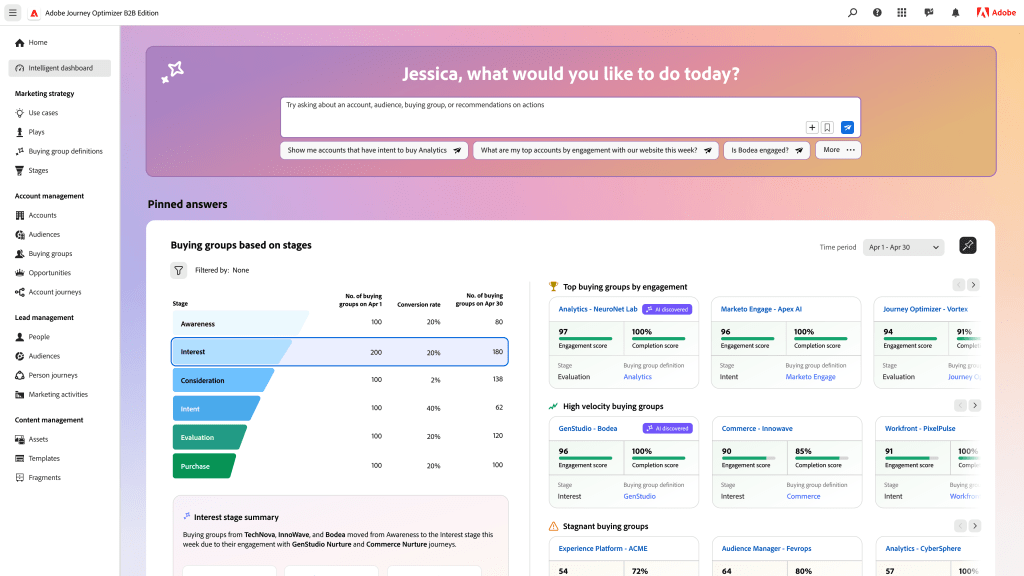Adobe’s AI-powered customer journey tool helps ID enterprise buyers
Adobe wants to make it easier for B2B marketers to identify and target groups of enterprise buyers with the integration of AI assistance into a new customer journey planning tool.
Adobe Journey Optimizer (AJO) B2B is now available, the company announced Wednesday, offering an enterprise-focused alternative to the existing AJO tool, which caters to B2C marketing.
One of the key features in AJO B2B is the ability to create buyer groups to target in sales and marketing efforts — a different approach to traditional lead-based and account-based marketing, said Sundeep Parsa, vice president of product for Adobe’s customer journey management portfolio.
Large-scale procurement decisions — such as the purchase of enterprise software or hardware, for example — now often involve lengthy sales processes with input from “committees” of as many as 15 business and technology leaders at customer organizations. This puts pressure on marketing and sales teams to establish relationships with the right people within client organizations and move towards eventual sales, he said.
AJO B2B helps simplify that process by making it easier to access related information, said Parsa, thanks in part to the integration with Adobe’s recently unveiled Experience Platform AI assistant. For example, a sales rep can ask the AI assistant in natural language for details on buying groups at a client organization, and whether any of these are likely to be interested in a particular product.
The AI tool can also provide a “completeness score,” which can indicate that a certain job role is missing from the list of buying group contacts, said Parsa. An example might be a security software vendor that wants to include a CISO or another employee with regulatory knowledge in their sales and marketing efforts.

Adobe Journey Optimizer now has a generative AI-driven email creator.
Adobe
The AI recommendations are based on Adobe’s core model, which understands concepts such as what a buying group is, or what a lead is, alongside custom models developed based on an AJO B2B customer’s own sales and marketing data.
Eventually, Adobe hopes the AI assistant can provide more guidance on how to target individuals within a buying group, such as a suggestion to send white papers and case studies to a technical diligence team, for instance, and an invitation to a decision-maker to an upcoming executive forum event.
The ability to create buying groups is one of several key features in AJO B2B. Once they are identified, users can create tailored “customer journeys” for specific job roles at client organizations across platforms such as email, web, chat, and webinars. Here, the embedded AEP AI assistant can be accessed for how-to advice and troubleshooting as users build customer journeys in the application.
AJO B2B users can then access asset libraries — including images from Adobe’s Firefly generative AI model — to create personalized emails suited to different buyer groups.
Sales and marketing teams can also view each other’s buying group engagements —this will streamline workflows and provide more effective customer connections, said Parsa. “There are less ‘broken telephone’ scenarios; they’re able to collaborate on a common understanding of buying groups,” he said.
Finally, dashboards that provide insights in buying group journey performance are now available in AJO B2B, with the ability to query data via the conversational AI assistant “coming soon,” Adobe said.
“You can say, ‘Give me a trend of the buying groups over the last six months and give me a linearity model by month.’ You can ask that question and the [AI assistant will] generate that for you,” he said.

